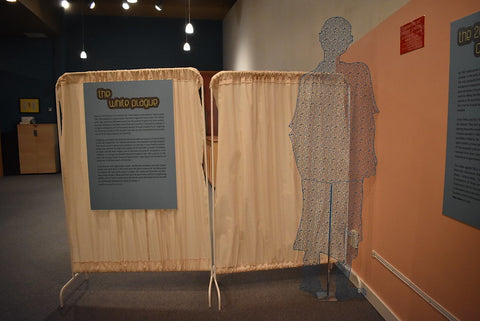
ONLINE EXHIBITION
The White Plague
Never in the history of humanity has there been a time without tuberculosis (TB). Mycobacterium tuberculosis may have originated more than 150 million years ago, and it has affected humans for thousands of years. It is now curable, but over millennia it has been one of the most stubborn illnesses to conquer. It is highly contagious and can be easily spread through droplets from coughing or sneezing. A variant of TB carried in animals can also be passed onto humans via some animal products, like raw milk.
Coughing and weight loss are the most observable symptoms of tuberculosis. In the Old Testament, the Hebrew word was schachepheth (wasting disease). The Greeks called it phtisis (consumption), for the way it consumed its victims. It was also dubbed The King’s Evil, Captain of All These Men of Death, The Robber of Youth, and the White Plague, due to the pale and anemic complexion of its sufferers. In Europe the disease reached its peak in the 18th century. In the mid-19th century it was renamed “tuberculosis”, referring to the formation of tubercles in different parts of the body.
“Voice hoarse; neck slightly bent, tender, not flexible, somewhat extended; fingers slender, but joints thick; of the bones alone the figure remains, for the fleshy parts are wasted; the nails of the fingers crooked, their pulps are shrivelled and flat…Nose sharp, slender; cheeks prominent and red; eyes hollow, brilliant and glittering; swollen, pale or livid in countenance; the slender parts of the jaws rest on the teeth as, as if smiling; otherwise of cadaverous aspect…”
–Greek Physician Aretaeus, 2nd century C.E.


